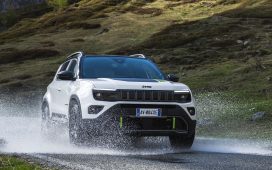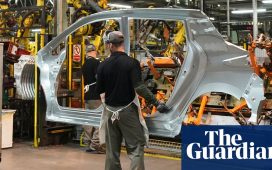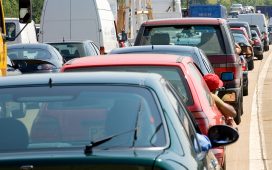GIVEN THAT car parks are very much established elements of the built environment, and bearing in mind the growth in popularity of electric vehicles, these buildings’ structural design needs to be carefully considered to ensure they are fire-safe, sustainable and secure for public use. That’s the considered view of the Institution of Structural Engineers (IStructE).
‘Car Park Design’ is the title of new and timely guidance issued by the IStructE in order to address the modern-day challenges and demands such buildings now pose and confront.
The design, construction, maintenance and re-use of car parks all need careful consideration given that their purpose is changing from solely being environment in which cars are simply parked. They are now places where electric cars are being left to charge and stored alongside e-bikes and e-scooters.
The IStructE’s guidance explains that, importantly, car parks need to be designed to handle changes in car design. The average vehicle’s weight has risen from 1.5 tonnes in 1974 to almost 2 tonnes in 2023 due to electric and hybrid batteries and the size of cars increasing. This extra load and the changing fire safety requirements that come with that are all considerations not just for new car parks, but also for existing structures.
Ten experts contributed their opinions to the guidance, among them overseeing consultant Chris Whapples FIstructE, who commented: “There are myriad considerations the design of a modern car park needs to address, particularly so given that selling petrol and diesel cars and vans will be banned in the UK by 2030 and hybrid cars and vans by 2035. Car park safety is paramount given the learnings from structural failures, including the Pipers Row floor collapse in Wolverhampton back in 1997.”
The guidance is spilt into two parts. Part One is aimed at those involved in procuring a car park, including clients, architects and project managers (among others). Part Two covers more in-depth design issues, with comprehensive recommendations for those responsible for inputting to the detailed design such as structural and civil engineers.
Serious fires
The report highlights that a number of serious fires have occurred in car parks which were designed to current guidance and that, in certain circumstances, this may not produce a fire-safe design.
Last month, Fire Safety Matters reported in detail on the recent fire that took hold in Car Park 2 at Luton Airport. Bedfordshire Fire and Rescue Service affirmed that the blaze, which led to significant structural collapse and resulted in the loss of circa 1,500 vehicles, began in an ordinary diesel vehicle.
Mark Punsdack FIStructE, chair of the Contributor Group, explained: “As we move towards using more electric or hybrid cars, we are now exposed to risks from vehicle compositions and propulsion systems, which current car park design guidance doesn’t acknowledge. We have moral and legal duties to make buildings accessible for all. Car parks are no exception to that rule.”
Accessibility is an essential part of the design process, of course, given that in the UK – and, indeed, many other countries – people are living longer and with more independence. The physical impairments of a greater number of car park users, therefore, need to be addressed.
Viability and usefulness
The Institution’s guidance dedicates a chapter to the often-overlooked mental health aspects of car park design, with important consideration given to the various physical measures that can be part of the building in a determined bid to deter suicide attempts.
‘Car Park Design’ covers the design, construction and asset management of all car park structures, including standalone multi-storey car parks, underground car parks and those within buildings with other uses such as office, residential and retail locations.
*Further information is available online at www.istructe.org








